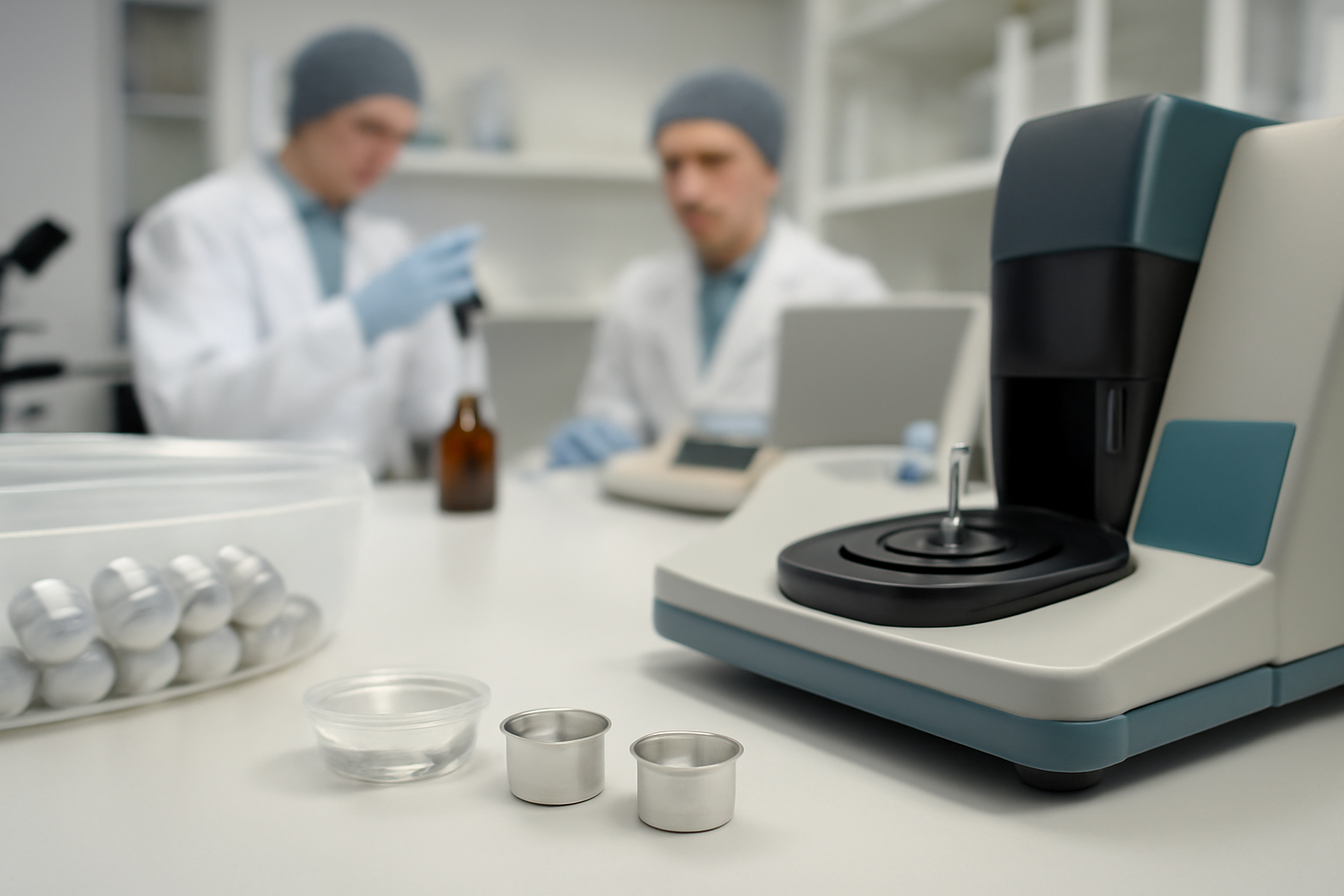
How Are Thermal Analysis Crucibles Used in Pharmaceutical R&D?
Thermal testing failures often come down to one silent culprit: sample containers. Small enough to be dismissed, crucibles actually decide the success of pharmaceutical R&D experiments.
In pharmaceutical R&D, thermal analysis crucibles are used in DSC and TGA tests to ensure accurate, repeatable heating conditions that directly impact data quality related to drug stability and decomposition.

It’s easy to focus on the active ingredients or high-end thermal analyzers when testing drug stability. But without proper crucibles, even leading equipment cannot produce viable data. Let’s uncover how this most overlooked component steers critical experiments in pharma labs.
Why are thermal analysis crucibles critical in drug development?
Crucibles often go unnoticed during thermal analysis prep. But an incorrect size, material, or finish can ruin an entire test by altering heat flow or causing unwanted reactions.
Crucibles ensure consistent heat transfer and containment for pharmaceutical samples, directly influencing the precision and reproducibility of thermal analysis such as TGA and DSC.

Consistency Enables Reproducibility
Reproducibility is one of the most essential requirements in drug R&D. When you’re characterizing a new drug’s thermal behavior—its melting point, degradation onset, enthalpy—you need it to validate across repeated trials. If the crucible isn’t uniform in mass or thermal conductivity, your results shift and lose credibility.
| Crucible Factor | Impact on Pharmaceutical R&D Thermal Analysis |
|---|---|
| Inner shape consistency | Governs sample surface area, influences data curve |
| Material purity | Prevents contamination and false reaction observations |
| Geometry standardization | Ensures repeatability across multiple test batches |
| Heat conductivity | Impacts sample temperature ramp accuracy |
How do crucible materials affect DSC/TGA results in pharma testing?
Choosing between aluminum, alumina, or platinum is not about cost—it’s about how your sample behaves under heat and chemical load.
Crucible material affects reaction behavior, thermal conductivity, inertness, and heat range, which are crucial in pharmaceutical analyses of thermal degradation and stability.
Matching Material to Experimental Goals
In my lab experience, I often had failures from assuming “standard aluminum pans” would work for everything. It turned out that trace metals in the sample reacted with aluminum. We switched to platinum, and suddenly the signal cleaned up.
| Crucible Material | Typical Use in Pharma R&D | Max Temp | Key Advantage |
|---|---|---|---|
| Aluminum | Standard DSC analysis for APIs, preformulation | ~600°C | High thermal conductivity, low cost |
| Alumina (Al₂O₃) | High-temperature testing, thermal degradation of excipients | >1500°C | Chemically inert, ideal for strong oxidizers |
| Platinum | Purity testing, metal-sensitive compounds | >1600°C | Non-reactive, excellent for acidic/basic drugs |
| Sapphire / Zirconia | Specialized high-temp, inert testing | >1600°C | Low reactivity, hard surfaces, precise analysis |
Which thermal analysis crucibles are preferred by pharmaceutical labs?
Pharmaceutical labs aren’t all using the same crucibles—it depends on their specific tests. But patterns emerge from years of stability tests, degradation studies, and polymorph screening.
Labs prefer aluminum crucibles for routine DSC screenings, and alumina or platinum crucibles for decomposition or high-temperature API stability experiments.

Preferred by Purpose
| Type of Pharma Test | Common Crucible Material Used |
|---|---|
| API Melting Point Screening | Aluminum (with or without lid) |
| Excipient Stability/Polymorphic Formulation | Alumina or Sapphire |
| Decomposition Kinetics in TGA | Platinum or Zirconia |
| Low-temp packaging interaction testing (DSC) | High-purity Aluminum |
| Thermal Stress Testing of Complex Formulations | Alumina crucibles with covers |
How to choose crucibles for stability and decomposition studies?
When testing drugs for shelf life or heat-exposure safety, you’re looking for precise thermal data. The crucible must not add noise or variations.
Choose crucibles based on their inertness, thermal resistance, size compatibility with analyzers, and proven uniformity to ensure valid heat stability data and decomposition profiling.
Selection Checklist for Pharma Thermal Analysis
If I had to set up a testing protocol for a new drug, this would be my checklist:
- Equipment Compatibility: Always match crucible shape and size with the instrument.
- Operating Temperature Range: Compare crucible heat capacity to your testing profile.
- Sample Reactivity: Avoid reactive materials like aluminum with corrosive samples.
- Weight Consistency: Ensure ±0.01g for sensitive thermal detection.
- Lids & Sealing: Use sealed crucibles when handling volatile samples in TGA.
- Batch Reproducibility: Select suppliers offering repeatable, industrial calibration standards.
| Choosing Parameter | Importance in Pharma Testing |
|---|---|
| Heat Resistance | For stability and decomposition at high temp |
| Inertness to Sample | Avoids side reactions, remains chemically passive |
| Analyzer Fit | Prevents heat loss and misalignment in heating cells |
| Consistency Across Lots | Essential for R&D validation and audit trails |
Conclusion
In pharma R&D, your crucible isn’t a detail—it’s the data gatekeeper. Choose wisely, test consistently, and your results will speak louder than guesswork.

Leave a comment